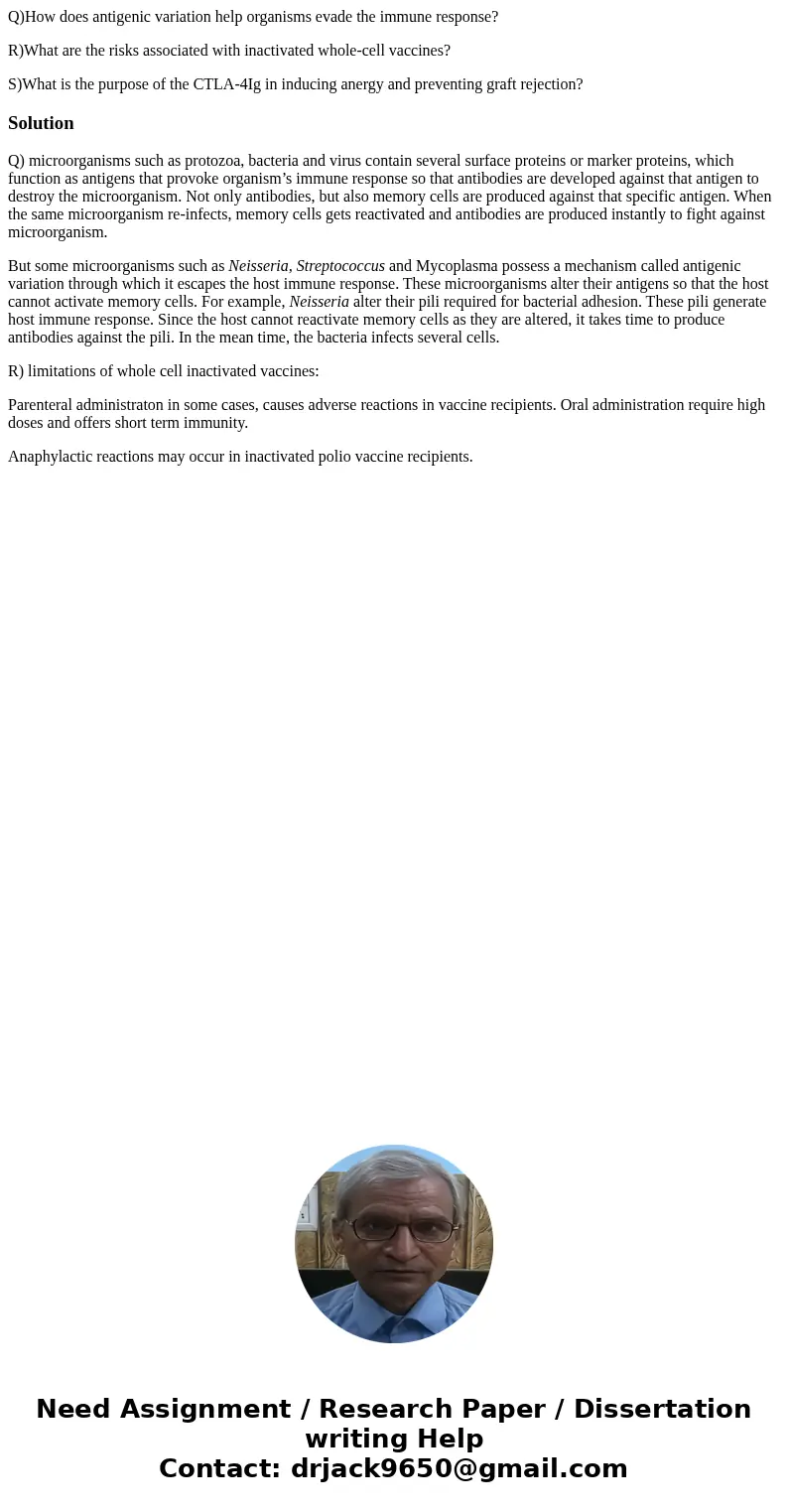QHow does antigenic variation help organisms evade the immun
Q)How does antigenic variation help organisms evade the immune response?
R)What are the risks associated with inactivated whole-cell vaccines?
S)What is the purpose of the CTLA-4Ig in inducing anergy and preventing graft rejection?
Solution
Q) microorganisms such as protozoa, bacteria and virus contain several surface proteins or marker proteins, which function as antigens that provoke organism’s immune response so that antibodies are developed against that antigen to destroy the microorganism. Not only antibodies, but also memory cells are produced against that specific antigen. When the same microorganism re-infects, memory cells gets reactivated and antibodies are produced instantly to fight against microorganism.
But some microorganisms such as Neisseria, Streptococcus and Mycoplasma possess a mechanism called antigenic variation through which it escapes the host immune response. These microorganisms alter their antigens so that the host cannot activate memory cells. For example, Neisseria alter their pili required for bacterial adhesion. These pili generate host immune response. Since the host cannot reactivate memory cells as they are altered, it takes time to produce antibodies against the pili. In the mean time, the bacteria infects several cells.
R) limitations of whole cell inactivated vaccines:
Parenteral administraton in some cases, causes adverse reactions in vaccine recipients. Oral administration require high doses and offers short term immunity.
Anaphylactic reactions may occur in inactivated polio vaccine recipients.

 Homework Sourse
Homework Sourse